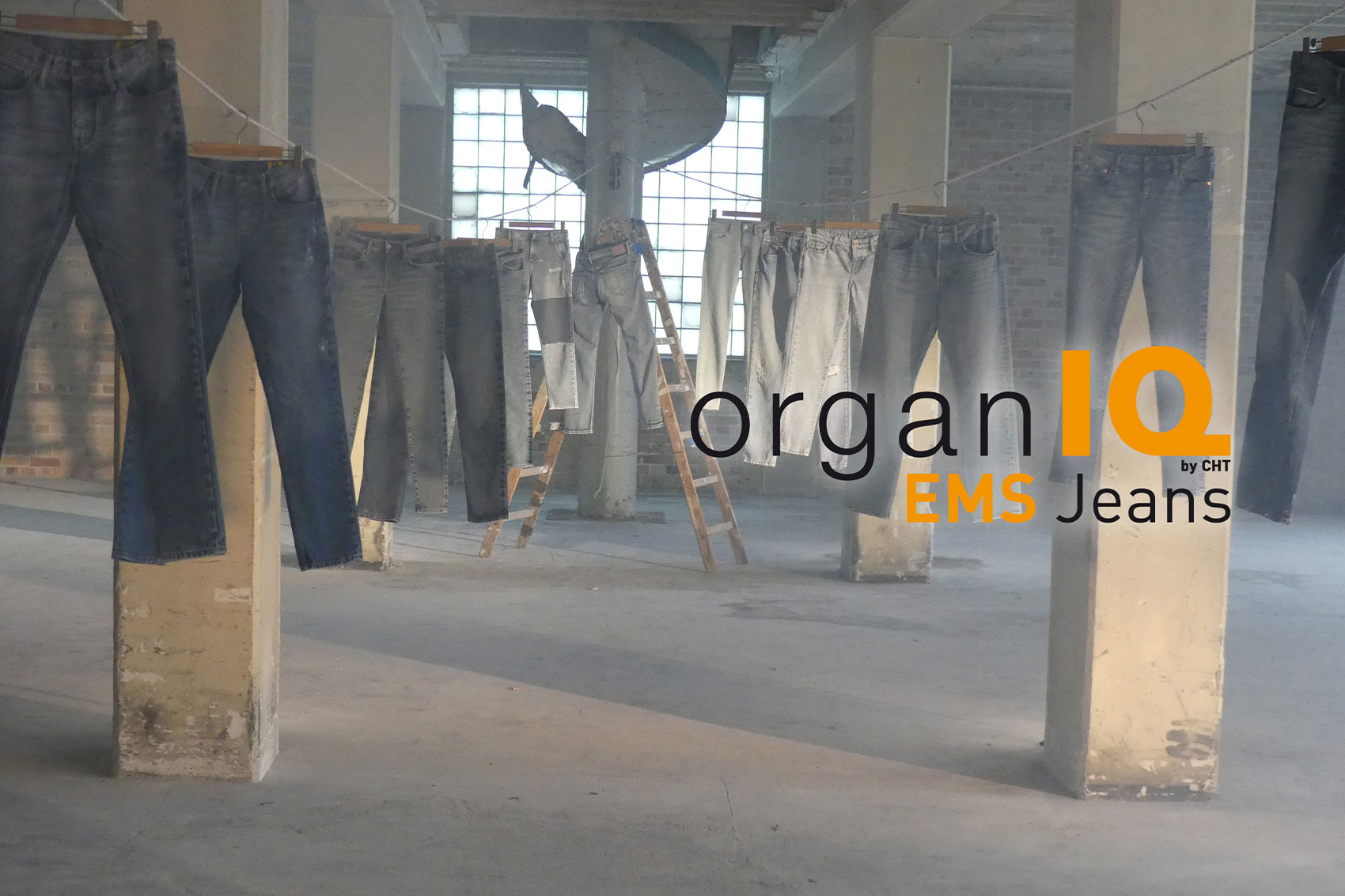the ecological transformation of a true classic
Jeans and Denim
It's hard to imagine a closet without jeans. The eternally young, mostly blue fabric is certainly the most popular item of clothing worldwide. On average, every German has around eight pairs of jeans in his or her closet, and worldwide, far more than one billion pairs of jeans are produced every year.
Originally, the main wearers of denim jeans were the gold miners in the American West in the mid to late 19th century, as the solid fabric was ideally suited to the physically demanding work. Its use as workwear ensured that denim was long considered clothing for the lower classes.
The movie industry in the USA contributed significantly to the image change of the classic. Authentic and rugged cowboys wearing Levi's jeans became a myth. Jeans became a synonym for a life of independence and individualism. Rebellious bikers in jeans, T-shirts and leather jackets further enriched the jeans image with rebellion and danger in the 1950s.
Denim was cool and in vogue. The global success story was unstoppable. Jeans and their designs thrive on the "used look" and have since become increasingly multifaceted. The possibilities of individualization and constantly changing fashion finishes through bleaching, used look or intensive washing are seemingly limitless.
But the success of denim has its price. The production of denim and the resource-intensive treatment of the raw jeans have an immense environmental impact. The high use of water and energy, as well as the chemicals used in conventional processes that lead to contaminated wastewater, are a strain on people and the environment.
It has been clear for years that efforts to make the production of jeans more sustainable are urgently needed and that there is immense potential for optimization for the environment and people. Fortunately, a rethink is currently taking place among buyers as well as fashion brands and their suppliers. The transformation of the denim industry is now in full swing and leading fashion companies, manufacturers, suppliers and organizations in the denim industry are working hand in hand in their sustainability efforts. In the field of denim finishing, CHT Group is contributing to the positive change with many innovative product and process solutions and is making a major contribution to resource-saving and environmentally friendly manufacturing processes. Especially in the production countries with mass production.

With its organIQ EMS Jeans, the CHT Group today provides the denim industry with a smart and flexible toolbox of ecological and perfectly matched auxiliaries. The innovations of the jeans and garment experts save water and energy, substitute harmful substances and ensure safe manufacturing and finishing processes.
Our specialized auxiliaries for denim and garment laundries increase quality, give jeans and garments optimal properties and ensure ever new and multi-faceted looks. Our textile auxiliaries also increase the life of denims and ensure that they need to be washed less frequently, improving the ecological footprint over the entire life cycle.
CHT smart chemistry for Jeans & Garments
organIQ EMS Jeans
Ecological modular system for state-of-the-art jeans finishing with high-performance and gentle alternatives to stones, potassium permanganate or chlorine. Sustainability without limits.
Technology Supporter Range
Product range specially adapted to the most modern machine technologies of jeans laundries, enabling efficient jeans treatment at the highest ecological and economical level.
Garment Protect Range
Smart auxiliaries for quality and protection of jeans and garments, which have positive effects on wearing comfort and longevity of the textiles.
Fashionable finishes and special effects
Stylish, cutting-edge finishes and looks with complete recipe recommendations.
Dyes and dyeing auxiliaries
Efficient, sustainable ranges for reactive, direct or pigment dyeing processes. Support current garment effects and guarantee brilliant and reproducible results with excellent fastness properties.
Functional finishing
Product systems for lasting freshness and hygiene effects, for water repellency or for finishing against microbial influences.
Support
Product selection with focus on all common environmental and industry standards, formulation and application advice, customized developments and process optimization.

Leading denim labels and manufacturers as well as well-known machine manufacturers rely on customized, sustainable auxiliaries and process solutions from CHT.
Join us as a partner in the ecological transformation of Jeans & Garments.
Jeans and Denim facts
- Jeans are made of denim, a tear-resistant cotton fabric. This was already used by the inventors of jeans at the end of the 19th century in New York, the fabric merchants Levi Strauss and tailor Jacob Davis. However, the light-colored fabric was too sensitive for the everyday life of gold prospectors, so it was dyed with plant dye from the leaves of the indigo bush. This is how the typical blue was created.
- Vegetable indigo pigments are not water-soluble. Before dyeing, they must first be converted into a water-soluble dye by auxiliary agents such as a salt (hydrosulfite). And this dye is - white! In the dye bath, the pigments are then deposited on the fibers. During drying, the indigo white reacts with the oxygen in the air, becoming blue indigo and again water-insoluble.
- Have you ever wondered why the inside of denim garments is white? It's because only the outside (warp) is dyed with indigo. The inside (weft) is not dyed.
- Although the Italians were the first to produce denim, the material itself comes from the French city of Nimes. "De Nimes", which translates as "from Nimes", gave the material its name.
- It is believed that denim was invented as early as 1500 in Genoa, Italy. The fabric was produced for the Italian navy at that time. The term "jeans" therefore probably comes from the word "Genes", the French name for the city of Genoa.
- Levi Strauss, the inventor of the famous Levi's brand, never wore a pair of his own jeans himself. He was a wealthy businessman and jeans were made for the poorer people at that time.

- Denim jeans were not called "jeans" until the 1950s - before that they were more commonly called "overalls."
- The small pocket inside the larger pocket of a pair of jeans, was originally intended for a pocket watch, which was common at those times.
Contact
You have further questions or need information?
We will be happy to help you.
Textile Auxiliary Solutions
+49 7071 154 233lab102[at]cht.com
